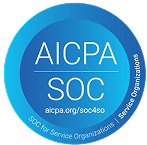What is optional practical training (OPT)?
Optional practical training (OPT) is a form of temporary employment that allows eligible international students on F-1 visas to work in the United States in a role directly related to their major area of study.
OPT is available at two different stages:
- Pre-completion OPT: You can work part time during your studies (up to 20 hours per week).
- Post-completion OPT: You can work full time after you complete your degree for a maximum of 12 months.
Most international students choose to use post-completion OPT to maximize their work experience after graduating.
Key facts about OPT jobs for international students:
- You can work for up to 12 months under standard OPT.
- For STEM students you may be eligible for an additional 24-month extension, known as STEM OPT, allowing you to work in the U.S. for a total of three years after graduation.
- You must apply for and receive an Employment Authorization Document (EAD) before starting work.
- The employment must be directly related to your field of study.
- You must not have accumulated more than 90 days of unemployment during your OPT period.
CTA
Explore Immigration Tips |
|
Have questions about the visa process? MPOWER’s immigration resources are for students like you. |


